Etna A4422TRVS Handleiding
Bekijk gratis de handleiding van Etna A4422TRVS (18 pagina’s), behorend tot de categorie Afzuigkap. Deze gids werd als nuttig beoordeeld door 85 mensen en kreeg gemiddeld 3.9 sterren uit 43 reviews. Heb je een vraag over Etna A4422TRVS of wil je andere gebruikers van dit product iets vragen? Stel een vraag
Pagina 1/18

3LI0V2.2
COOKER HOOD
U S E R I N S T R U C T I O N S
DUNSTABZUGSHAUBE
G E B R A U C H S A N W E I S U N G
HOTTE PER CUISINE
M A N U E L D U T I L I S A T I O N
G E B R U I K S A A N W I J Z I N G
AFZUIGKAP
M A N U A L D E U T I L I Z A C I Ó N
CAMPANA EXTRACTORA
M A N U A L D O U S U Á R I O
CAPPA ASPIRANTE
M A N U A L E D U S O
VENTILATOR
B R U K E R V E I L E D N I N G
B R U G E R V E J L E D N I N G
LIESITUULETIN
O D H G I E S C R H S E W S
OKAP
I N S T R U K C J E U Z Y T K O W N I K A
ODSAVAC
N Á V O D K P O Ù Z I T Ì
PARAELSZIVÓ
H A S Z N Á L AT I Ú T M U T A T Ó
GB
D
F
NL
E
I
P
S
N
GR
RUS
PL
CZ
H
FIN
DK
COIFA ASPIRANTE
ARE

2
G
Z
E
F
Y
500
Z
A
B
C
D
280 440
F
E
720 : 1170
275 437
C
20
170
60
170
B
D
Z
A
167
450
500 (cm 90)
450 (cm 60)
Fig.1
Fig.2
Fig.4
Fig.5

- 4 -
GENERAL
Carefully read the following important information regarding installation
safety and maintenance. Keep this information booklet accessible for
further consultations.
This apparatus was designed to be used in the suction version (air
evacuated externally), in the filter version (internal air recycling) or
in centralized exhausting version.
SAFETY PRECAUTION
1. Take care when the cooker hood is operating simultaneously with an
open fireplace or burner that depend on the air in the environment and
are supplied by other than electrical energy, as the cooker hood removes
the air from the environment which a burner or fireplace need for
combustion. The negative pressure in the environment must not exceed
4Pa (4x10-5 bar). Provide adequate ventilation in the environment for
a safe operation of the cooker hood.
Follow the local laws applicable for external air evacuation.
2. WARNING !
In certain circumstances electrical appliances may be a danger
hazard.
A) Do not check the status of the filters while the cooker hood
is operating
B) Do not touch the light bulbs after appliance use
C) Flambè cooking is prohibited underneath the cooker hood
D) Avoid free flame, as it is damaging for the filters and a fire
hazard
E) Constantly check food frying to avoid that the overheated
oil may become a fire hazard
F) Disconnect the electrical plug prior to any maintenance.
G) This appliance is not intended for use by young children or
infirm persons without supervision
H) Young children should be supervised to ensure they do not
play with the appliance
I) There shall be adequate ventilation of the room when the
rangehood is used at the same time as appliances burning gas
or other fuels
L) There is a risk of fire if cleaning is not carried out in accordance
with the instructions
INSTALLATION INSTRUCTIONS
• Electric Connection
The appliance has been manufactured as a class II, therefore no earth
cable is necessary.
The connection to the mains is carried out as follows:
BROWN = L line
BLUE = N neutral
If not provided, connect a plug for the electrical load indicated on the
description label. Where a plug is provided, the cooker hood must be
installed in order that the plug is easily accessible.
An omnipolar switch with a minimum aperture of 3mm between
contacts, in line with the electrical load and local standards, must be
placed between the appliance and the network in the case of direct
connection to the electrical network.
• The appliance must be installed at a minimum height of 650 mm from
an cooker stove in case of a gashob or an electrical hob.
If a connection tube composed of two parts is used, the upper part must
be placed outside the lower part.
Do not connect the cooker hood exhaust to the same conductor used
to circulate hot air or for evacuating fumes from other appliances
generated by other than an electrical source.
• Mounting the cooker hood to the wall
Drill holes A-B-C-D according to indications quoted in (fig. 3).
Use screws and screw anchors suitable for wall (e.g. reinforced
cement, plasterboard) for the mounting of the cooker hood.
Where screws and screw anchors are supplied ensure that they are
suitable for the type of wall where the cooker hood is to be mounted.
Lock in the flange connector Y to the cooker hood (fig. 2).
Affix the bracket Z to the wall via the drill holes A (fig. 4).
Hang the cooker hood on the wall using the drill holes C (fig. 3).
Fasten the cooker hood using the fastening drill holes D (fig. 3).
• Exhausting Version
Connect the flange Y to the discharge opening with a connecting tube
(do not carry out for filter version).
Thread the upper connector E to the inside of the lower connector F;
hang the two connectors inserting them vertically on the cooker hood
locking the lower connector F to the wall using the drill holes B (fig. 3),
unthread the upper connector E towards the top, locking it in with the
appropriate screws in the drill holes G of the bracket Z (fig. 2) previously
affixed to the wall via the drill holes A (fig. 3).
In order to transform your cooker hood from exhausting version to
filter version, ask your local retailer for active carbon filters and then
carry out instructions for mounting filter version cooker hood.
• Filter Version
Install the cooker hood and the two connectors as described in the
paragraph mounting the exhausting version cooker hood.
To mount the filter connector refer to instructions included in the kit.
If the kit is not supplied, then order the kit as an accessory from your
local dealer.
The filters must be fitted to the fan unit placed inside the cooker hood.
The air is replaced in the environment via the eyelets impressed on the
connector E.
• Centralized exhausting version
This version is used in habitations
1 with centralized suction systems.
The switch controls the opening and closing of a valve via a thermo-
electric device. Turning the switch to the ON position, after 60 sec-
onds, will effect the opening of the valve to a 90° rotation permitting the
suction of the stale air externally. Turning the switch to the OFF posi-
tion, after 100 seconds, will effect the closing of the valve.
USE AND MAINTENANCE
• It is recommended to operate the appliance prior to cooking.
It is recommended to leave the appliance in operation for 15 minutes
after cooking is terminated in order to completely eliminate cooking
vapours and odours.
The proper function of the cooker hood is conditioned by the regularity
of the maintenance operations, in particular, the active carbon filter.
• The anti-grease filters capture the grease particles suspended in the
air, and are therefore subject to clogging according to the frequency of
the use of the appliance.
In order to prevent fire hazard, it is recommendable to clean the filter
at a maximum of 2 months by carrying out the following instructions:
- Remove the filters from the cooker hood and wash them in a solution
of water and neutral liquid detergent, leaving to soak.
- Rinse thoroughly with warm water and leave to dry.
- The filters may also be washed in the dishwasher.
The aluminium panels may alter in colour after several washes. This
is not cause for customer complaint nor replacement of panels.
• The active carbon filters purify the air that is replaced in the
environment. The filters are not washable nor re-useable and must be
replaced at maximum every four months. The saturation of the active
carbon filter depends on the frequency of use of the appliance, by the
type of cooking and the regularity of cleaning the anti-grease filters.
• Clean the fan and other surfaces of the cooker hood regularly using
a cloth moistened with denatured alcohol or non abrasive liquid
detergent.
THE MANUFACTURER DECLINES ALL RESPONSIBILITY FOR
EVENTUAL DAMAGES CAUSED BY BREACHING THE ABOVE
WARNINGS.
ENGLISH
Product specificaties
| Merk: | Etna |
| Categorie: | Afzuigkap |
| Model: | A4422TRVS |
Heb je hulp nodig?
Als je hulp nodig hebt met Etna A4422TRVS stel dan hieronder een vraag en andere gebruikers zullen je antwoorden
Handleiding Afzuigkap Etna
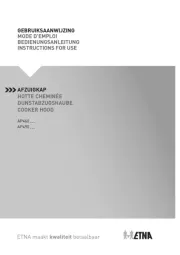
13 September 2025
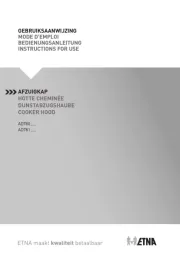
7 Januari 2025

7 December 2024

7 December 2024

15 Oktober 2024

9 Juli 2024

9 Juli 2024

6 April 2024

6 Januari 2024

6 Januari 2024
Handleiding Afzuigkap
- Itho
- Scancool
- Ignis
- Weller
- Halifax
- Creda
- Airforce
- Viva
- Canarm
- Heinner
- Prima
- ARC
- Esatto
- Saivod
- ElectriQ
Nieuwste handleidingen voor Afzuigkap
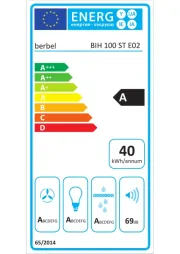
17 September 2025
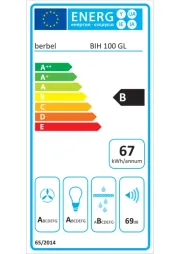
17 September 2025
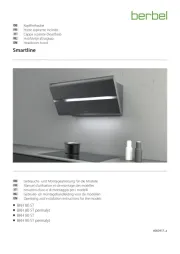
17 September 2025
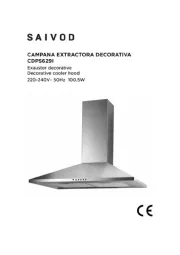
15 September 2025
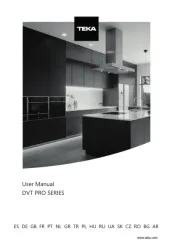
15 September 2025
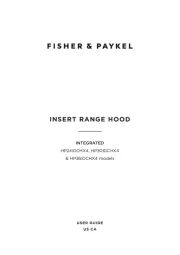
15 September 2025
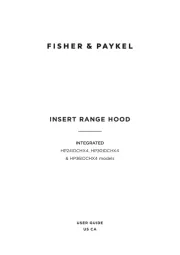
15 September 2025
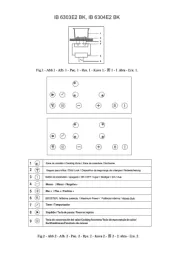
15 September 2025
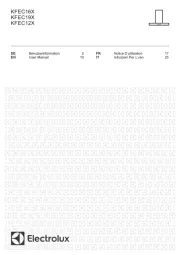
15 September 2025
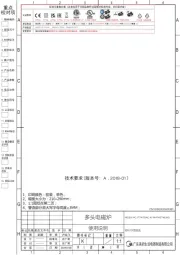
15 September 2025